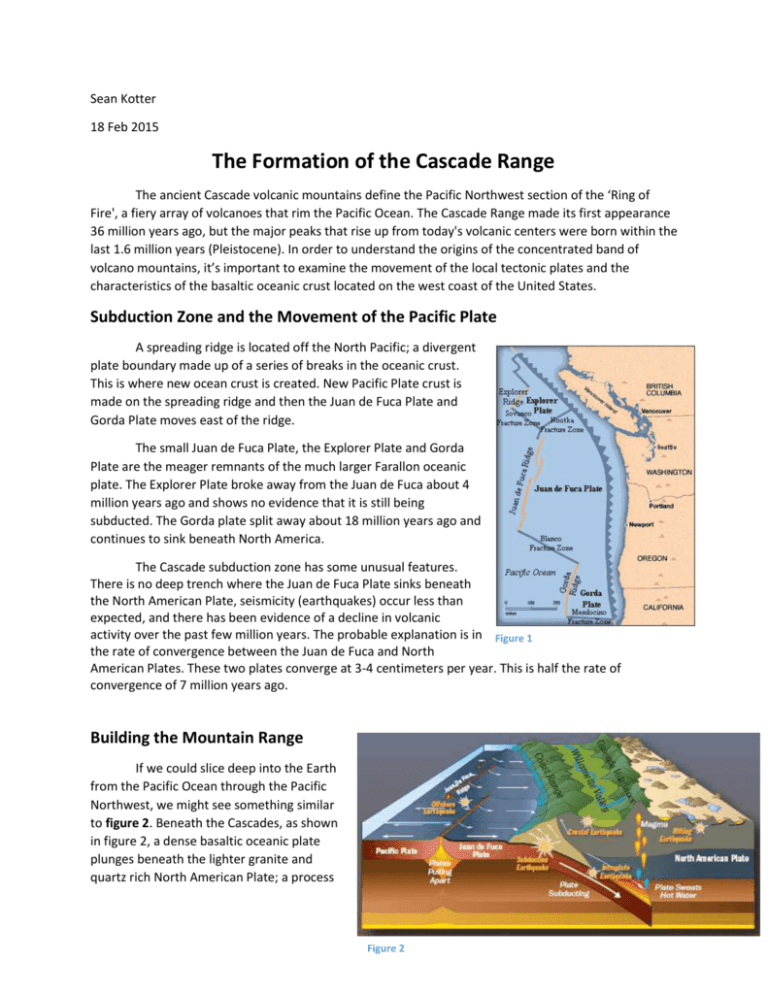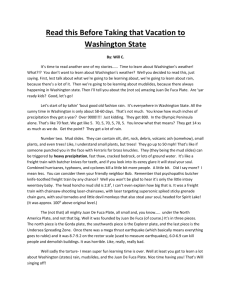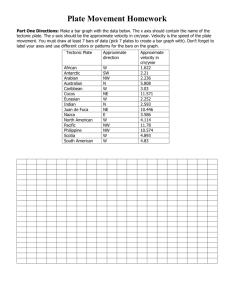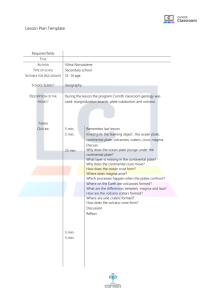cascade range(technical)
advertisement

Sean Kotter 18 Feb 2015 The Formation of the Cascade Range The ancient Cascade volcanic mountains define the Pacific Northwest section of the ‘Ring of Fire', a fiery array of volcanoes that rim the Pacific Ocean. The Cascade Range made its first appearance 36 million years ago, but the major peaks that rise up from today's volcanic centers were born within the last 1.6 million years (Pleistocene). In order to understand the origins of the concentrated band of volcano mountains, it’s important to examine the movement of the local tectonic plates and the characteristics of the basaltic oceanic crust located on the west coast of the United States. Subduction Zone and the Movement of the Pacific Plate A spreading ridge is located off the North Pacific; a divergent plate boundary made up of a series of breaks in the oceanic crust. This is where new ocean crust is created. New Pacific Plate crust is made on the spreading ridge and then the Juan de Fuca Plate and Gorda Plate moves east of the ridge. The small Juan de Fuca Plate, the Explorer Plate and Gorda Plate are the meager remnants of the much larger Farallon oceanic plate. The Explorer Plate broke away from the Juan de Fuca about 4 million years ago and shows no evidence that it is still being subducted. The Gorda plate split away about 18 million years ago and continues to sink beneath North America. The Cascade subduction zone has some unusual features. There is no deep trench where the Juan de Fuca Plate sinks beneath the North American Plate, seismicity (earthquakes) occur less than expected, and there has been evidence of a decline in volcanic activity over the past few million years. The probable explanation is in Figure 1 the rate of convergence between the Juan de Fuca and North American Plates. These two plates converge at 3-4 centimeters per year. This is half the rate of convergence of 7 million years ago. Building the Mountain Range If we could slice deep into the Earth from the Pacific Ocean through the Pacific Northwest, we might see something similar to figure 2. Beneath the Cascades, as shown in figure 2, a dense basaltic oceanic plate plunges beneath the lighter granite and quartz rich North American Plate; a process Figure 3 Figure 2 known as subduction. As the oceanic slab sinks deep into the Earth's interior beneath the continental plate, high temperatures and pressures allow water molecules locked in the minerals of solid rock to escape. The water vapor acts as a super conductor of heat due to the hydrogen bonds within the molecules. This means that the water trapped within the rocks becomes hotter than the surrounding rock material and begins to melt surrounding minerals. The water vapor rises into the pliable mantle above the subducting plate, causing some of the mantle to melt. This newly formed magma rises toward the Earth's surface to erupt, forming a chain of volcanoes (the Cascade Range) above the subduction zone. At the same time, the North American plate shows signs of buckling and straining. The shear stress of the subducting oceanic plate causes the edge of the lighter continental plate to be dragged down with the oceanic plate. This then leads to the uplift of the newly formed volcanic arc that formed the early Cascades. Over the years the range has continued to uplift. The areas that were once at sea level are now roughly 2-3 miles above sea level. Although the rate of subduction and uplift has slowed within the past thousand years the Cascades continue to grow at a rate of 4.6 cm per year. Evidence of Continued Growth In the figure 4, you can see the seismic activity that has occurred over the past 50 years. Each yellow dot represents a micro quake and the yellow circles indicate earthquakes with magnitudes of 2.0 and higher. The number of large earthquakes is drastically smaller than the number of small micro quakes. This is an indication of a decreased rate in the subduction of the Juan De Fuca Plate. More than 3000 vents erupted during the most recent volcanic episode that began 5 million years ago[4]. Are there more eruptions in our future? As long as subduction continues, new Cascade volcanoes will continue to rise. Conclusion Roughly 36 million year ago the thick ocean crust of the pacific began to shift and force its way under the North Figure 3 American plate. Over the next 36 million years a slow processes of subduction, melting, uplift, and violent volcanic eruptions shaped the north western region of what is today the United States. Those physical and chemical processes that formed the Cascade Range are only found in the pacific ring of fire. Today the violent forces that shaped the iconic mountains of the North West have slowed but are still active and continue to grow the mountain range. The formation of the Cascades and their continued growth are a testament to the awesome power and forces that the Earth can bring to shape the world around us. Citations: Figure 1: Subsea plate movments of the eastern pacific. Digital image. USGS. United States Geological Survey, 02 Mar. 2014. Web. 6 Feb. 2015. <http://www.usgs.gov/>. Figure 2: Cascade Formation. Digital image. USGS. United States Geological Survey, 24 May 2012. Web. 06 Feb. 2015. <http://www.usgs.gov/>. Figure 3: Digital image. USGS Geomaps. United States Geological Survey, 6 Sept. 2011. Web. 06 Feb. 2015. <geomaps.wr.usgs.gov>. 4. "Geologic Provinces of the United States: Pacific." USGS Geology in the Parks. United States Geographic Survey, Apr. 2011. Web. 7 Feb. 2015.








